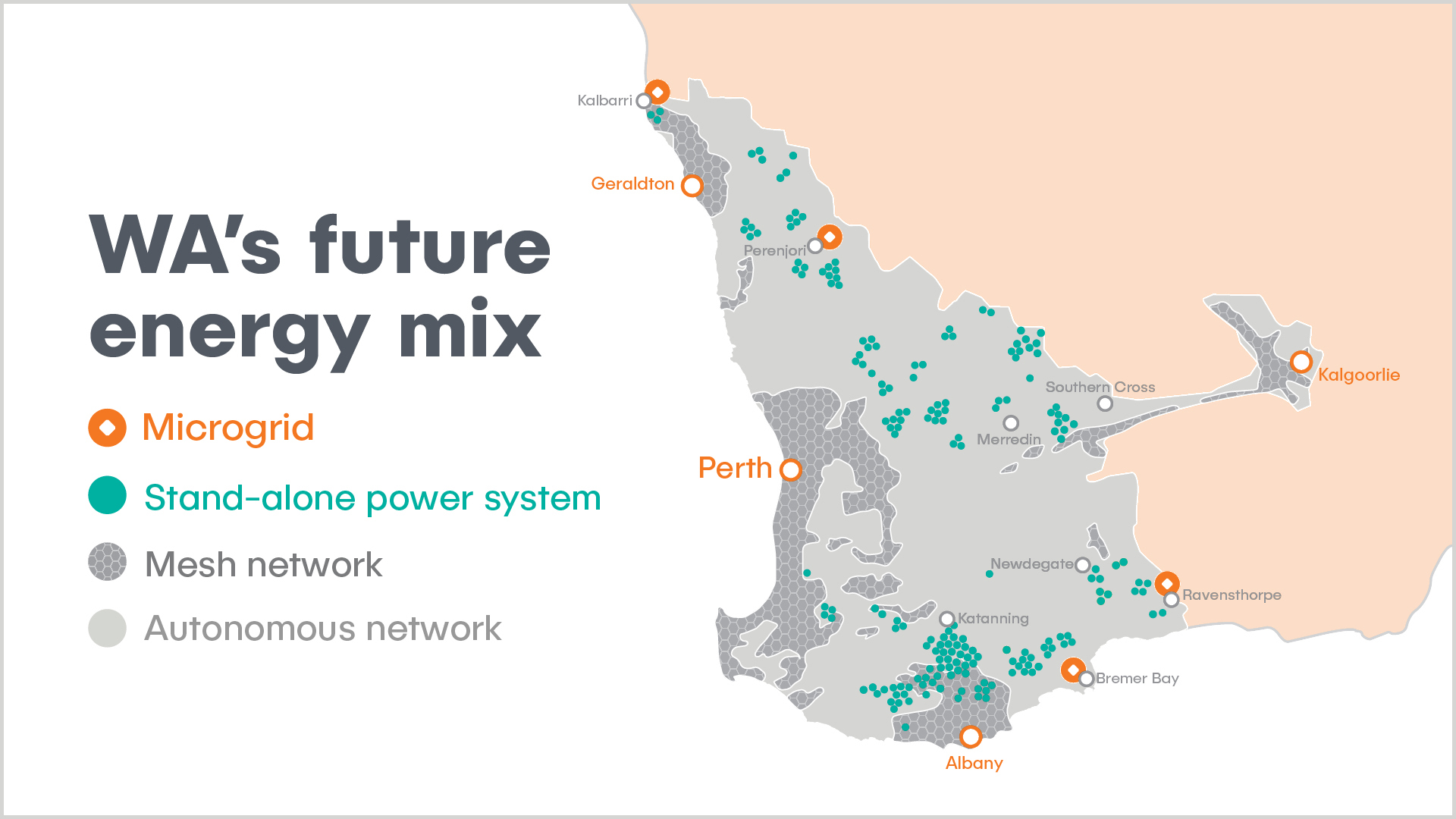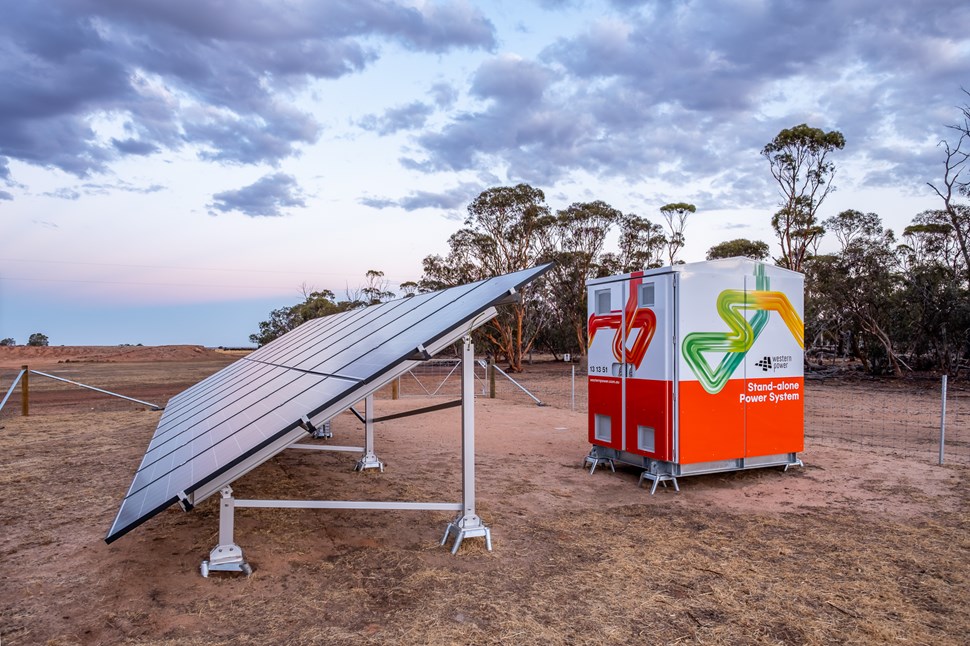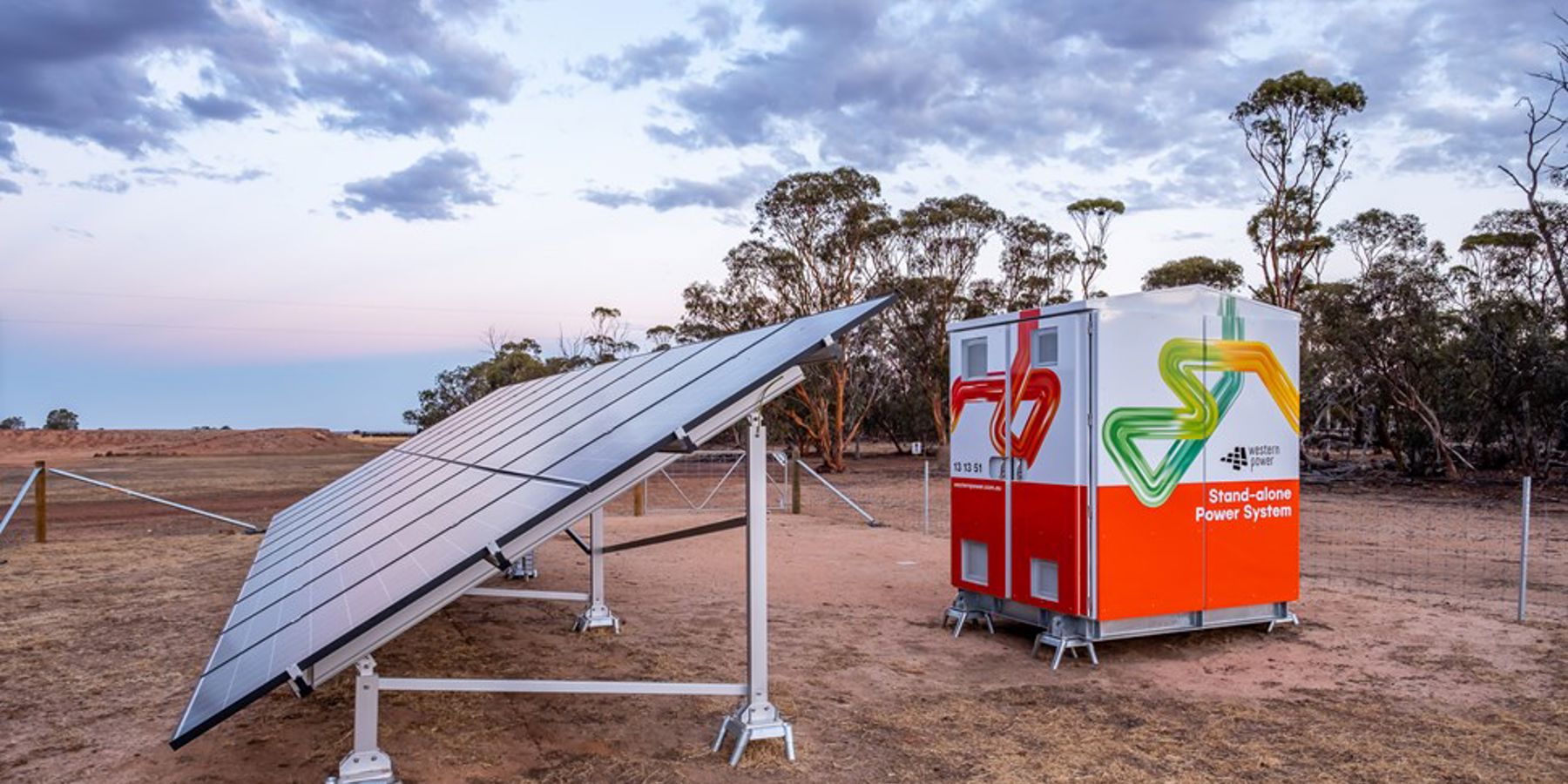Over the next decade, our grid will change – it’s already happening. Instead of being one-size fits all through poles and wires, it’s becoming modular, innovative and flexible, with a mix of energy solutions where new tech plugs in and out of the grid as needed.
What makes up a modular grid? Read on for a quick explainer on what each of the elements are. No doubt you’ll be hearing even more about them over the coming years.

Mesh network
What is it?
This is the network that will service much of WA’s higher density populations residing in Perth, Geraldton, Kalgoorlie and the South West. As it does now, power will be transported through the grid along the existing electrical infrastructure. What will change over the next decade is the sources of power feeding electrons into the network. That includes rooftop solar power from homes and power stored in community batteries. So, a mesh network is densely integrated, mixing traditional and new tech to power customers.
Autonomous network
What is it?
Currently, more than 52% of the network services less than 3% of the users. Over the next few decades, this regional network will need to be replaced as it is reaching the end of its life.
Thanks to significant recent developments in technology, we have found there are more efficient and reliable ways in serving customers on this network.
In some remote places where there might be just a few connections on a line, we are starting to implement solutions to supply power locally to service those customers, creating a more autonomous network.
These solutions might be a stand-alone power system that powers a farmer’s shearing shed using solar, storage and a generator, or a microgrid that services a whole area by utilising energy storage and/or local generation (like wind and solar power), and isolating the local power supply when the main line is tripped.
SPS
What is it?
SPS stands for stand-alone power systems. An SPS is, like it sounds, a self-sufficient power system that generates power through solar, stores it in a battery and is backed up by a traditional generator. They can be set up for a particular purpose, like powering a whole farm, or even just an electric fence. They will be a key tool used in our future autonomous network and, following a successful pilot trial in the Great Southern, we’ve started rolling out SPS’s across more of regional WA.

SPS has solar panels, a battery and back-up generator.
Microgrid
What is it?
Essentially a small-scale power grid which can provide power for an entire community. Unlike SPS’s, there will typically be a ‘back up’ connection back to the main power grid should it ever go down. Microgrids, like the Kalbarri microgrid, typically consist of renewable energy generation like solar and wind, plus energy storage. We expect to introduce more microgrids in the future.
Battery Energy Storage System (BESS)
What is it?
A battery stores energy that can supply customers at a later time. We have two types of batteries in our future grid. Community batteries, which we call PowerBanks, take in excess power created by rooftop solar systems on homes in a community. This excess power can then be used by those homes when the sun is not shining and power requirements go up.
The second type of battery, like the one used at Perenjori, works as part of the network infrastructure, providing back up a whole town when supply from the grid is disrupted.
Find out how we're transforming the gridSee some of our current innovation projects and trials. |
Learn more |
Posted 07 October 2019
